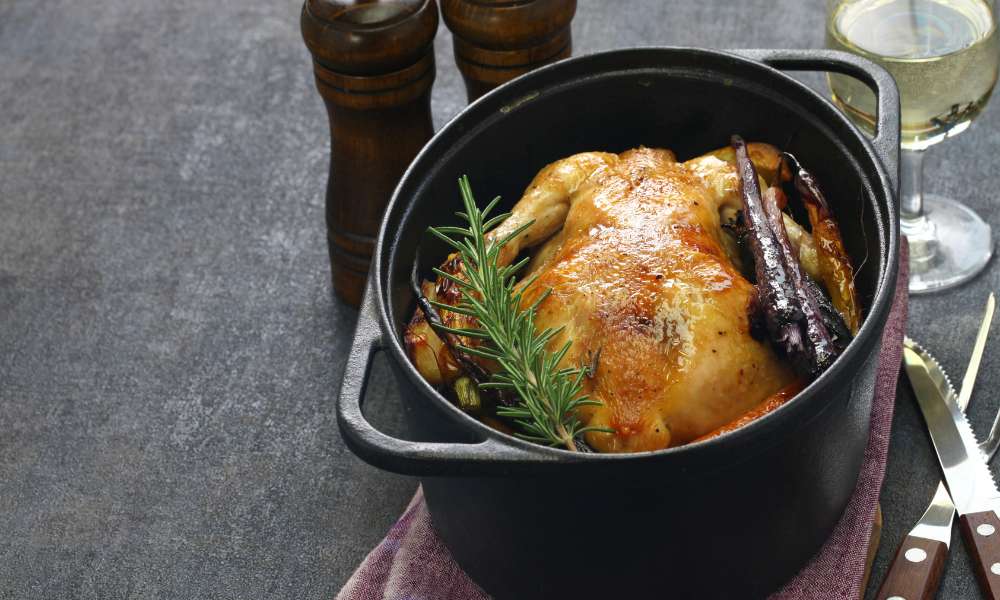Cooking a roast in a Dutch oven is an art that blends simplicity with sophistication, turning a classic piece of meat into a succulent feast. This method, steeped in tradition, harnesses the Dutch oven’s unique ability to distribute heat evenly, ensuring your roast is tender, flavorful, and perfectly cooked every time. Whether you’re a seasoned chef or a home cook looking to impress at your next family gathering, this guide will walk you through the steps necessary to master the technique of cooking a roast in a Dutch oven. Get ready to transform quality ingredients into a memorable meal that celebrates the joy of cooking and sharing good food.
Essential Tools and Ingredients for a Perfect Dutch Oven Roast
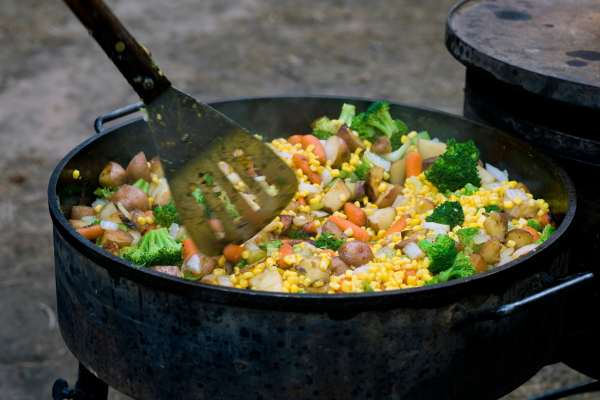
To achieve the perfect Dutch oven roast, having the right tools and ingredients is essential. A well-seasoned, heavy-duty Dutch oven is key for even heat distribution and retaining moisture. Choose a high-quality cut of meat, such as a chuck roast or brisket, known for their rich flavors and tenderness when cooked slowly. Include fresh herbs like rosemary and thyme, and robust vegetables such as carrots, onions, and potatoes to enhance the flavor profile. Stock or red wine makes excellent braising liquids that add depth and richness to the dish. With these fundamental components, your roast is set to be a mouth-watering centerpiece at any meal.
Preparing Your Meat: Tips for Seasoning and Marinating
When preparing a roast for your cook a roast in a Dutch oven, seasoning and marinating are crucial for enhancing flavor and tenderness. Begin by generously rubbing your choice of herbs and spices onto the meat. Ingredients like salt, pepper, garlic powder, and rosemary not only add depth but also help to break down proteins, making the roast more tender. For marinating, immerse the meat in a mixture of acids such as wine, vinegar, or lemon juice combined with oils and seasonings overnight. This process infuses the roast with rich flavors and softens its texture, setting the stage for a deliciously succulent result.
The Importance of Preheating Your Dutch Oven
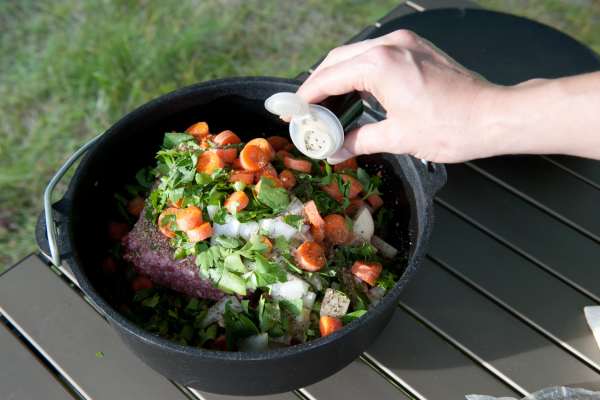
Preheating your Dutch oven is a critical step in the cooking process, especially when preparing a roast. This technique ensures that the oven reaches a consistent temperature, which is crucial for searing the meat effectively and locking in flavors. Starting with a hot oven helps to create a delicious crust on the roast, while the inside remains juicy and tender. This method also reduces cooking time and enhances the overall taste and texture of the dish. By taking the time to preheat your Dutch oven, you set the stage for a perfectly cooked roast that is sure to delight your guests.
Searing the Meat: Techniques for Locking in Flavor
Searing meat before slow cooking is crucial for developing depth and complexity in the flavor of your roast. Begin by heating your Dutch oven on the stove over high heat and adding a small amount of oil with a high smoke point. Once the oil is shimmering, place the roast in the pot, allowing it to brown deeply on all sides. This process, known as the Maillard reaction, creates a rich, caramelized crust that enhances the overall taste of the dish. Be sure not to rush this step; giving each side enough time to sear properly ensures that the roast will be both visually appealing and deliciously aromatic.
Adding Liquids: What to Use and How Much
Choosing the right liquids and knowing how much to add is crucial for cooking a roast in a Dutch oven. Typically, beef or chicken broth offers a rich base that enhances the meat’s natural flavors. Wine can also be added for a deeper flavor profile. Generally, you’ll need enough liquid to come up about one-third the height of the roast. This amount helps maintain moisture without boiling the meat, allowing it to braise slowly and absorb the aromatics. Be careful not to overfill, as the meat will release juices during cooking, contributing additional liquid. This method ensures a tender, flavorful roast every time.
Layering Vegetables and Aromatics for Enhanced Flavors
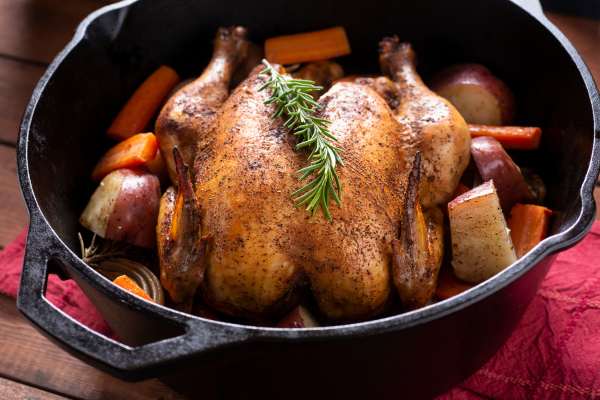
Layering vegetables and aromatics beneath your roast in a cook a roast in a Dutch oven not only utilizes space but also enhances the dish’s overall flavor. Carrots, onions, and celery form a classic mirepoix that imparts a rich base flavor, while adding garlic, herbs like rosemary or thyme, and a splash of wine can elevate the aroma and taste. As the roast cooks, these elements slowly release their flavors, infusing the meat with depth and complexity. This method not only maximizes the culinary potential of your Dutch oven but also creates a naturally flavorful gravy from the melding of juices and seasonings, perfect for drizzling over the finished roast.
Mastering the Slow Cooking Process
Mastering the slow cooking process in a Dutch oven is key to achieving a tender and flavorful barbecue. Begin by setting your oven to a low temperature, typically around 275°F to 325°F, which allows the meat to cook slowly and evenly. Cover the Dutch oven tightly to retain moisture and heat, creating an ideal environment for the barbecue to become exceptionally tender. Periodically check the barbecue and baste it with its own juices or a broth to enhance flavor and prevent drying out. This gentle cooking method breaks down the fibers in the meat, ensuring a melt-in-your-mouth texture. With patience and careful temperature management, your Dutch oven barbecue will be a standout dish.
Monitoring Temperature and Cooking Times

Accurately monitoring temperature and cooking times is crucial for achieving a perfectly cooked roast in your Dutch oven. Utilize a reliable meat thermometer to check the internal temperature of the barbecue, ensuring it reaches the desired level of doneness without overcooking. Typically, a barbecue should cook at a low temperature for several hours, depending on its size and the type of meat. Keeping a close eye on the thermometer and adjusting your oven’s heat settings as necessary will help maintain a steady cooking environment. This precision ensures that the meat is tender, juicy, and full of flavor, epitomizing the slow-cooked goodness that Dutch ovens are celebrated for.
Tips for Basting and Adding Flavor During Cooking
Basting your roast during the cooking process is key to enhancing flavor and ensuring moisture. As your barbecue cooks in the Dutch oven, it releases flavorful juices that settle at the bottom. Periodically spoon these juices over the barbecue to reintroduce moisture and enrich the meat with its own flavors. For added taste, consider incorporating herbs like rosemary or thyme into the juices before basting. This technique not only deepens the flavor profile but also contributes to a more tender and succulent final dish. Remember, frequent basting keeps the barbecue from drying out, making every slice as juicy and delicious as possible.
Resting the Roast: Techniques for Optimal Tenderness
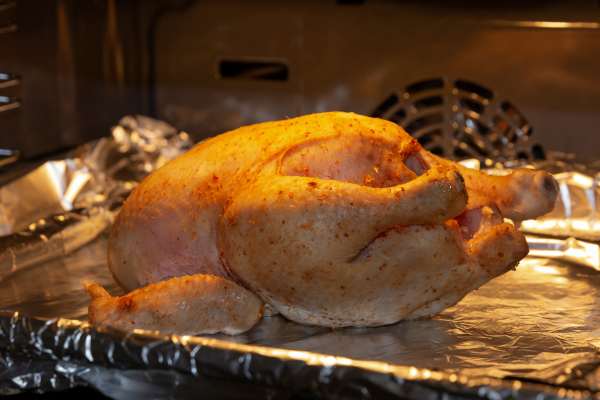
Allowing your roast to rest after cooking is crucial for achieving optimal tenderness. Once removed from the Dutch oven, tent the meat loosely with foil and let it sit for about 10 to 15 minutes before carving. This resting period allows the juices, which have been driven to the center of the barbecue during the cooking process, to redistribute throughout the meat. As a result, when you slice into it, the barbecue will be juicier and more flavorful. This simple pause not only enhances the texture but also makes carving easier, ensuring every slice is as delicious as it is tender.
Conclusion
Mastering how to cook a roast in a Dutch oven can elevate your culinary skills and introduce you to a world of rich flavors and tender textures. With the right preparation, seasoning, and cooking techniques, you can create a meal that is both hearty and delicious. This guide has provided you with essential steps to ensure your barbecue is perfectly cooked, offering a memorable dining experience. Embrace the slow-cooking prowess of the Dutch oven and enjoy the process from the first sizzle to the last slice. Gather your friends and family around the table to share not just a meal, but an expression of tradition and love.
